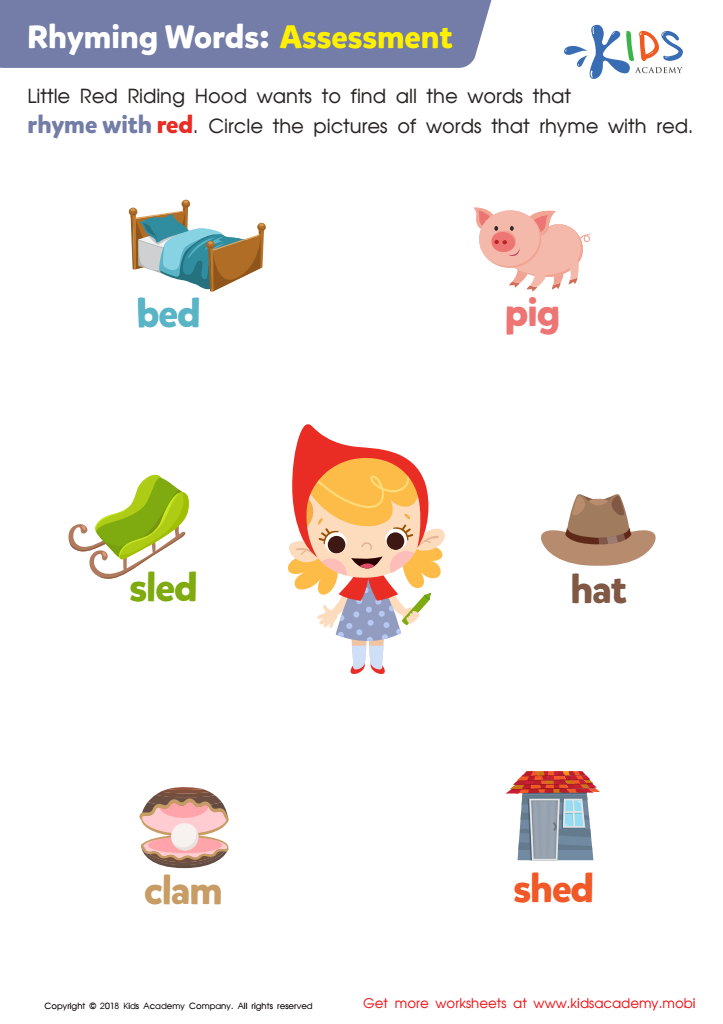Normal Rhyming worksheets activities
1 filtered results
-
From - To


Rhyming Words: Assessment Worksheet
Normal Rhyming worksheets activities are essential tools in the development of young learners in many fundamental areas. These activities are not just about playing with words; they are a cornerstone in literacy, phonemic awareness, and language acquisition. The utility of Normal Rhyming worksheets activities extends far beyond the surface, embedding deep educational values and skills that benefit children throughout their learning journey.
Firstly, these worksheets significantly enhance phonemic awareness. Phonemic awareness is the ability to hear, identify, and manipulate individual sounds—phonemes—in spoken words. By engaging in rhyming activities, children learn to recognize word patterns and sounds, which is a critical step in learning to read and spell. The playful nature of rhyming makes this fundamental skill accessible and enjoyable, encouraging learners to dive deeper into the world of sounds.
Moreover, Normal Rhyming worksheets activities bolster vocabulary development. As children explore rhymes, they are exposed to a variety of words, many of which are new to their lexicon. This exposure not only enlarges their vocabulary but also improves their understanding of word meanings and contexts. Through rhyming, children learn that words that sound similar can have different meanings, thereby enhancing their linguistic and cognitive skills.
Additionally, these activities promote cognitive development. They require learners to think critically and creatively, making connections between words that sound alike but may be vastly different in meaning. This level of analysis and problem-solving fosters higher-order thinking skills, which are invaluable across all areas of learning.
Furthermore, Normal Rhyming worksheets activities are instrumental in developing reading skills. A strong foundation in rhyming inevitably leads to better reading fluency and comprehension. When children understand rhyme schemes, they can predict word patterns and sounds, making reading a smoother and more enjoyable experience.
Lastly, the fun and engaging nature of these worksheets make learning an enjoyable experience. They add a layer of entertainment to education, ensuring that children are engaged, motivated, and eager to learn. This positive association with learning from an early age lays the groundwork for a lifelong love of education.
In conclusion, Normal Rhyming worksheets activities are not just an entertaining educational tool but a multifaceted approach to developing essential literacy and cognitive skills. They are a fundamental part of early childhood education, paving the way for successful learning experiences in the future.

 Assign to the classroom
Assign to the classroom











